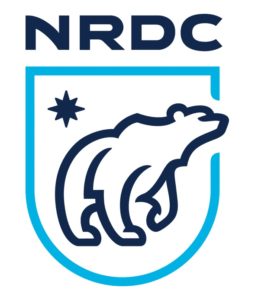
The Football Association of Iceland (KSI) has never known anything like it. These days, barely a day goes by without a packed reception at its Reykjavik HQ, as administrators and coaches from around the world descend. All arrive in search of the same answer: how does this tiny country punch so spectacularly, and consistently, above its weight?


A lot of football's beauty is its simplicity: Two goals – made of anything from empty bottles to school bags – and a ball is all you need. But few would argue against the fact that better facilities will breed better results in the long run. The Hungarian Football Federation (MLSZ), are pursuing just that having opted to install a new series of pitches up and down the country to improve the nation's training infrastructure. These new 40m x 20m pitches will primarily benefit youth sports teams and schools, with the schools using the pitches in the mornings before the clubs, including those from neighbouring towns, take over the facilities in the afternoons and evenings





Participation in competitive matches is a key element in developing national teams. With FIFA Forward's investment of USD 588,197, New Zealand’s women’s team, nicknamed the Football Ferns, and All Whites youth teams have been able to complete a very intensive programme, involving an extensive travel schedule, and are on the right track, having achieved some significant results. Under the constant supervision of the New Zealand Football member association, this project allows the teams to move forward and provides them with the necessary means to achieve substantial and sustainable progress.


With a population of more than 52.2 million people, Kenyans are known to be extremely passionate about football and the potential for women’s football to develop in such an extended African territory is tremendous. As a result, women’s football development has become one of the top priorities of the Football Kenya Federation (FKF). The Kenyan Women's Premier League is the top tier women's football league in the Kenyan football league pyramid.


New technical centre ready to allow more than 1000 kids to enjoy football in Honduras
DetailsThe horizon looks bright for the future of football in Tegucigalpa, the mountainous Honduran capital of 1.2 million inhabitants, where players are now able to enjoy training at a brand new youth football stadium, financed by the FIFA Forward Development Programme. The new facility will allow them to enjoy football in the best conditions, bringing more quality of play in a country where football is more than just a game.



The eighth meeting of the FIFA Council was held today in Kigali, Rwanda, where the members of FIFA’s strategic and decision-making body discussed a number of pivotal aspects regarding the future of FIFA competitions.



Considered as the most popular sport in Poland, football is more than a passion in the Eastern European country. It brings fans together and helps to reduce social isolation, especially in the most remote areas. The development of football infrastructure and the constant increase in numbers of the coaches in recent years, combined with the increased interest in football among young people, created the foundation upon which the Polish Football Federation (PZPN) was called to build its future strategy.


The Venezuela Football Federation (FVF) with the support of the FIFA Forward development programme, in line with the MA long-term strategy, decided to focus on the development of women’s football to increase the tremendous potential it can bring in Latin America. Through the Yara Women’s Technical Centre project, the objective is to improve all available infrastructure in a sustainable way and to provide the facilities with the latest and most innovative technologies.



The Atlanta Hawks have a competitive green streak that came out when they vied with the Miami HEAT to become the first NBA team with a LEED-certified home arena. For eight months, the Hawks worked hard to achieve LEED Certification for Existing Buildings: Operations and Maintenance (EBOM), and the team was awarded the LEED certification on April 7, 2009, becoming the first NBA arena in the world to achieve this certification for an existing facility. Today, many NBA arenas have achieved LEED certification including the Miami HEAT, the Orlando Magic, Houston Rockets, and Portland Trail Blazers. To earn certification the arena invested in a variety of green improvements almost a decade after the building first opened. These upgrades included: HVAC, chiller, and lighting retrofits; reflective roof materials that reduce cooling needs; and water conservation measures such as low-flow bathroom fixtures that have cut water usage by 2 million gallons.




The Toyota Center and Houston Rockets had environmental responsibility on their radar even before the arena opened in 2003. “We started before we got into the building. We have always been very environmentally conscious at the Toyota Center—it’s always been a part of how we operate,” says Sarah Joseph, director of community relations at the Rockets. The push towards operational efficiency and eventually pursuing LEED certification stems from their green-minded owner, Leslie Alexander. “Environmental responsibility is extremely important to Mr. Alexander,” says Scott Manley, director of event operations at Toyota Center. The Toyota Center was the fourth NBA arena to receive LEED certification, earning LEED Silver for Existing Buildings: Operations and Maintenance in 2010. “Applying for LEED was done on a voluntary basis, so we looked at that as an opportunity to take a leadership role,” says Manley.



